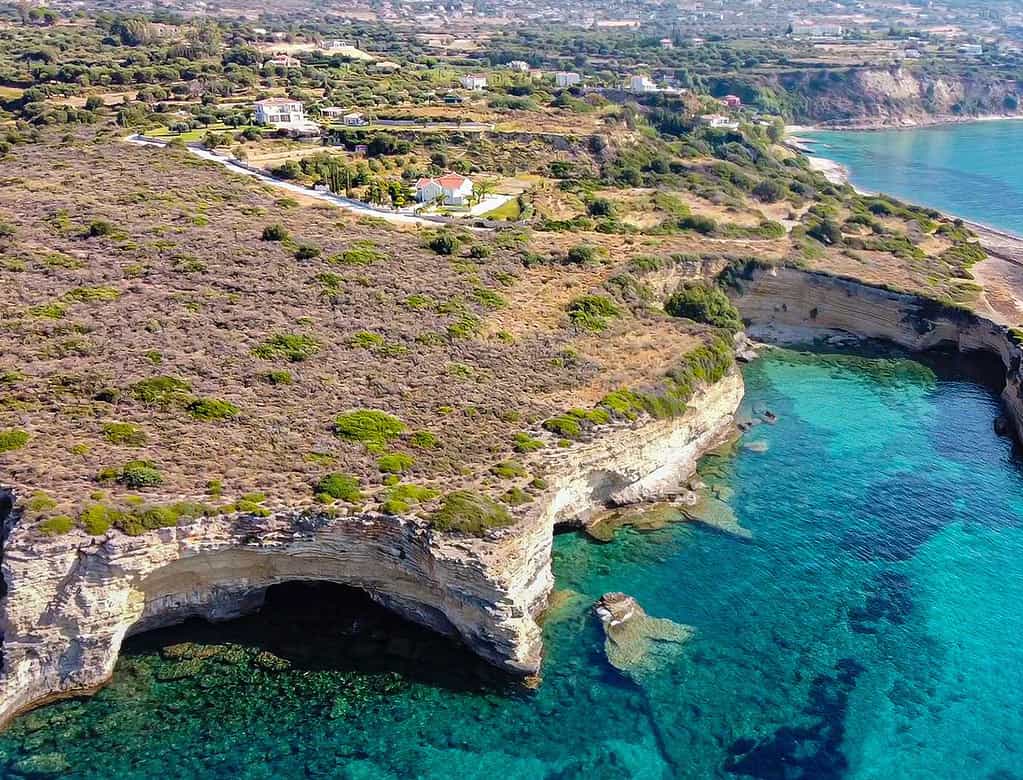The island of Kefalonia is like one big laboratory. This is where nature shows itself in its most beautiful forms and gives us a unique opportunity to look into its interior and follow how it developed. What is paleontology? If you want to learn more about this science, visit Saint Thomas beach, about 11 km from Argostoli, and apart from golden sand, warm clear water, and an ideal place for diving, this beach is also ideal for little scientists. The rocks surrounding this beach are over 5 million years old and you can see how the earth’s crust has changed in their cross-section. Fossil remains of marine animals can be seen in the upper layers. Small openings on the surface are places where sea salt is naturally deposited. During the summer months, they are filled with seawater, which, after evaporation, leaves a crust of salt on the surface each time. This bark, called “afrala” in Kefalonia, is collected by the locals and called “Salt flower”.
Kefalonia And Paleontology In The St. Thomas Beach

